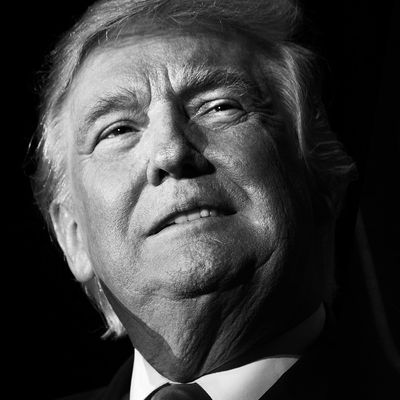
The final shoe to drop that really matters to the outcome of the 2016 presidential election fell yesterday as the Electoral College lifted Donald Trump to the White House, ending quite possibly the most unlikely winning bid for the office ever. Today we have the denouement: the final certified popular vote returns from the 50 states and the District of Columbia.
Hillary Clinton won the popular vote by 2,864,974, which is 2.1 percent of the total vote. That is the second-largest margin (by percentage) by which anyone who lost the electoral vote has won the popular vote since the 1824 election, which was actually resolved by the U.S. House. The still-all-time champion among votes decided by the Electoral College remains the 1876 contest (wherein the “loser,” Samuel Tilden, actually won the popular vote by 3 percent), but that’s a misleading precedent since a bipartisan commission adjudicated disputed electoral votes and the whole thing was the subject of a vast bargain which, among other things, ended congressional Reconstruction of the South. Clinton’s margin significantly exceeds that of the most recent victim of the Electoral College, Al Gore in 2000, who won the popular vote by a mere 543,816. Whatever indirect assistance Trump may have received from a certain country where vodka is very popular, he did not need judicial intervention to prevail, the way George W. Bush did.
In the end, Trump won by taking three key battleground states (Michigan, Pennsylvania, and Wisconsin) by a combined margin of 77,744 votes. That, my friends, is crazy close in an election where more than 136 million votes were cast: just over one-twentieth of one percent of the vote. And that is why the debate over the reasons for the electoral-vote outcome may never end: It’s the kind of swing-state margin that could have been caused by any of the big things we have all been talking about, such as James Comey’s reminders of the email “scandal,” strategic leaks from Russian hacks, or a strategic error by the Clinton campaign about where its resources were committed. But it’s also small enough to be caused by tiny and remote things, like tactical decisions on the very last day, the weather, election-law decisions made years ago, or the tides of the moon. The calendar could also have been a factor: As the University of Pennsylvania’s Dan Hopkins points out, the fact that the 2016 election happened to be held on the latest possible date may have given Trump the opportunity to nail down just enough late-deciding votes.
We will never really know why Donald Trump appeared to be the luckiest and Hillary Clinton the unluckiest candidate in history in terms of the distribution of votes. But we will live with the consequences for far longer than even the longest postmortem.






























